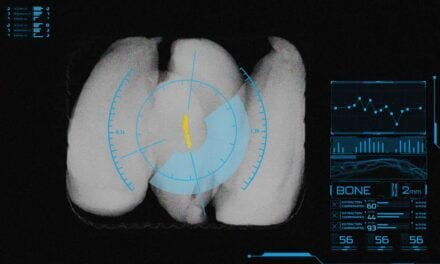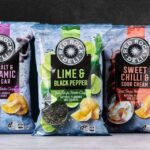Consumer reaction is considered a vital measure of food development. Sensory evaluation of food products is a scientific method of measuring, analysing and interpreting the quality of food product through the senses of sight, smell, touch, taste, and sound, explain Sheshrao Kautkar, Anjineyulu Kothakota, and Nukasani Sagarika
One of the most important goals of the food industry is to determine how food products affect consumers’ senses. Also, the persons who develop healthier recipes like nutritionists and dieticians should have a primary concern on this. Because our five senses act as the gatekeeper of our bodies, the benefits of healthy food will be reaped only if our senses accept it. Therefore, consumer reaction is considered a vital measure of food development. Because no apparatus can substitute for the senses in evaluating food, humans are used as test subjects.
Sensory evaluation of food products is a scientific method of measuring, analysing and interpreting the quality of food products through the senses of sight, smell, touch, taste, and sound. This widely accepted definition is used for testing the food materials by sensory evaluation committees within various professional organizations. When compared to other methods which give false-positive results, sensory evaluation can be adopted in various sectors of food production for getting accurate results. The usage of sensory evaluation in different sectors of food production is shown in fig 1.
Importance of sensory evaluation
This technique is widely employed in product development and to check the quality of food products. Also, it is used for setting standards to determine the acceptability of the product. It provides valid and reliable information to R & D, Production and marketing. It helps in maintaining the quality of food product which matches with the consumer preference and finally provides a means to optimize the product successfully.
Uses of sensory evaluation
Sensory evaluation can be used to compare similarities and quality of food products . Improvements in food samples can be made possible through this technique by exploring specific characteristics of an ingredient or a food product. It helps in checking whether a final food product meets its original standards or not. Also, it provides objective and subjective feedback data to enable informed decisions to be made. Finally, it measures the shelf life of the product.

Steps to perform sensory evaluation
- Decide on the type of test you want to perform – suitable for what you want to find out.
Preference test – asks whether people like or dislike a product, e.g. hedonic scale
Discrimination test – asks people to describe a particular attribute of a product, e.g. paired comparison test. - Find a clear area to hold the sensory test. Try to make sure that it is away from noise and cooking smells which may distract the people from taking part in the test. This can be difficult in a busy classroom. Some schools have created areas within the food room for tasting to be held.
- Place as many samples in serving containers as there are people taking part in the test. Code each sample with a random number, letter or symbol.
- Check that you have enough glasses of water for the people taking part. This is for tasters to cleanse their palette after tasting each food sample.
- Make sure the people taking part know what is expected from them, i.e. they understand which test they are taking and what they have to do.
- Ask each person to taste one sample at a time, and record their responses. Allow time between samples so that tasters can record their opinions.
A. Discrimination tests
These types of tests aim to evaluate specific attributes, i.e. the characteristics of products (crunchiness). They are objective tests and include triangle, duo trio, ranking, and paired comparison.
Triangle test:
- Prepare three food samples, two of which are the same
- Arrange the samples in a triangle
- Ask the tasters to decide which of the samples the odd one out is
- Record the responses from the tasters
Duo-Trio:
- Prepare three food samples, two of which are the same
- Using one of the two identical samples as a control, as the tasters to decide which of the other two remaining samples is the same as the control
- Record the tasters’ responses
Paired comparison test:
- Based on the comparison between two samples
- The task is to identify more designated characteristics of a sample like sweetness
- Easy to organize and implement
- Used for determination of threshold for the basic solution
Multiple sample tests:
- Involves more than three samples
- Include the separation of samples into two groups of higher and lower intensity
- Descriptive test:
- Provide a complete sensory description of the product
- It takes in to account all sensations (visual, auditory, olfactory etc)
B. Descriptive tests
Flavor profile:
- Panel of 4-6 members examine and discuss the sample in open session
- Once an agreement is reached the leader summarizes the result in report form.
Texture profile:
- Provide relationship with instruments and results of judges
- Variability in the result is eliminated
C. Affective test
These types of tests supply information about people’s likes and dislikes of a product. They are not intended to evaluate specific characteristics, such as crunchiness or smoothness. They are subjective tests and include hedonic, paired comparison and scoring.
Hedonic scale:
- Prepare the food samples.
- Ask each taster to taste each sample in turn and tick a box, from ‘1 Dislike Very Much’ to ‘5. Like Very Much’ to indicate their preference. This is a 5-point-scale. Sometimes a 9-point-scale is used.
- The taster may also wish to make remarks about the products’ appearance, taste, odour, and texture.
- Analyse the results. Which sample received the highest/lowest scores? Which sample was preferred?
D. Other tests
Ranking test:
- Decide on the attribute to be ranked, e.g. crunchiness.
- Allow tasters to evaluate samples and place them in rank order according to the presence or absence of the attribute from ‘very’ to ‘not at all’ and record their responses.
Scoring:
- Food samples are scored on a scale, between dislike and like.
- Allow tasters to evaluate samples and score (place in the order of preference) and record their responses.
References
1. Sung Eun Choi (2018). Sensory evaluation. Food Science – an ecological approach. Page No. 98.
2. Food – a fact of life: file:///C:/Users/Acer/Downloads/vdocuments.site_sensory-evaluation-1.pdf.
Sensoryevaluation:http://www.foodafactoflife.org.uk/Sheet.aspx? siteId=20§ionId=85&contentId=329
PLEASE ALSO READ:
https://pfionline.com/sensory-evaluation-a-tool-in-determining-acceptability-of-food-products/
Image by GrenouilleFilms/iStockphoto.com

















